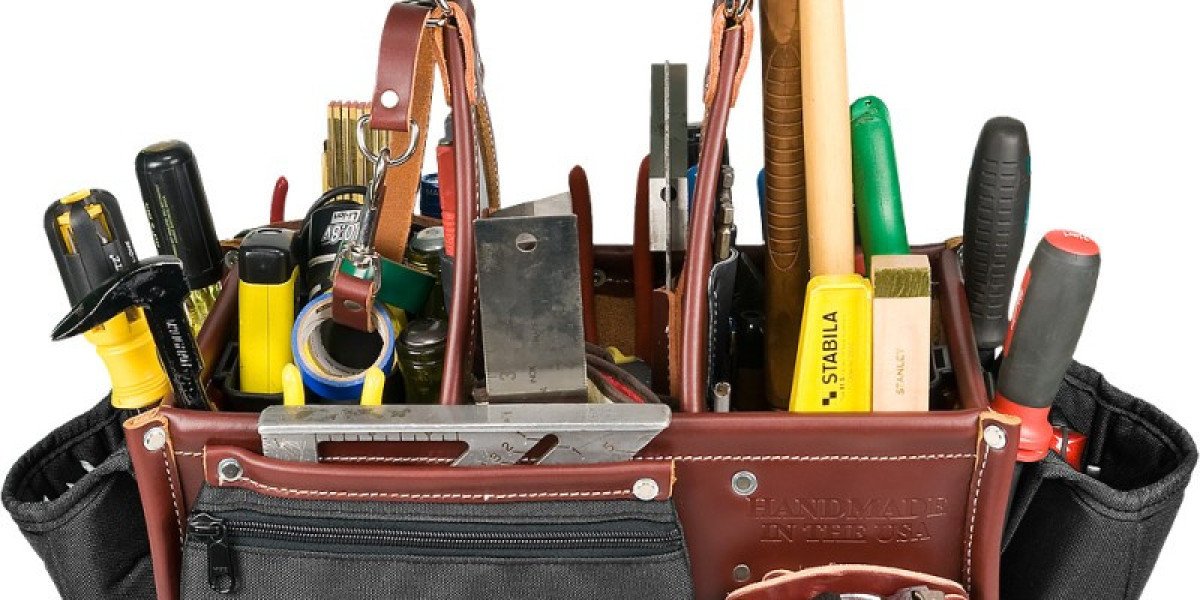In a world where craftsmanship is often replaced by convenience, leather tool bags stand as a testament to durability, functionality, and style. These bags are more than just practical carriers for tools; they are symbols of tradition, quality, and the art of leatherworking. For centuries, artisans and tradespeople have relied on leather tool bags to protect their tools and make their work more efficient. Today, these bags continue to be an essential accessory for both professionals and hobbyists, blending timeless appeal with modern needs.
A Brief History of Leather Tool Bags
The use of leather as a material for carrying tools dates back thousands of years. Ancient civilizations recognized leather's strength, durability, and flexibility, making it an ideal material for creating bags and pouches. Leather tool bags became particularly popular during the Middle Ages, when skilled trades such as blacksmithing, woodworking, and masonry were in high demand. Craftsmen needed sturdy, reliable bags to transport their tools from one job site to another, and leather was the material of choice.
Over time, the design of leather tool bags evolved to meet the specific needs of different trades. Blacksmiths required large, heavy-duty bags with reinforced seams to carry their hammers and tongs, while carpenters needed bags with multiple compartments to organize their chisels, saws, and other tools. Despite these variations, the fundamental qualities of leather—its durability, resistance to wear and tear, and ability to develop a rich patina over time—remained constant.
The Craftsmanship Behind Leather Tool Bags
The creation of a leather tool bag is an art form in itself, requiring skill, precision, and an eye for detail. The process begins with the selection of high-quality leather, often sourced from full-grain or top-grain hides. Full-grain leather is considered the highest quality because it retains the natural grain of the hide, making it more durable and allowing it to age beautifully. Top-grain leather, while slightly less expensive, is also a popular choice due to its smooth finish and resistance to stains.
Once the leather is selected, it is cut into pieces according to the bag's design. This step requires careful measurement and planning to ensure that the bag will be both functional and aesthetically pleasing. The pieces are then sewn together using strong, durable thread, often by hand. Hand-stitching is a hallmark of high-quality leather goods, as it allows for greater control and precision, resulting in seams that are both strong and visually appealing.
After the bag is assembled, it undergoes a series of finishing processes. These may include polishing, conditioning, and applying protective coatings to enhance the leather's durability and appearance. The final product is a tool bag that not only serves a practical purpose but also stands as a piece of craftsmanship that can last a lifetime.
The Advantages of Leather Tool Bags
One of the most significant advantages of leather tool bags is their durability. Leather is a robust material that can withstand the rigors of daily use, making it ideal for carrying heavy tools. Unlike synthetic materials, which can wear out or tear over time, leather becomes more supple and resilient with use. A well-made leather tool bag can last for decades, making it a wise investment for anyone who values quality and longevity.
Another advantage of leather tool bags is their natural resistance to the elements. Leather has a unique ability to repel water, which helps protect the tools inside the bag from moisture and rust. While no material is entirely waterproof, leather can withstand light rain and humidity better than many synthetic alternatives. Additionally, leather's natural breathability helps prevent the buildup of mold and mildew, ensuring that tools remain in good condition.
Leather tool bags are also highly customizable. They can be designed with various compartments, pockets, and loops to accommodate different types of tools. This customization makes it easier for tradespeople to organize their tools and access them quickly, improving efficiency on the job. Furthermore, leather can be easily embossed or stamped with logos, names, or other designs, allowing for a personalized touch.
The Aesthetic Appeal of Leather Tool Bags
Beyond their practical advantages, leather tool bags are also prized for their aesthetic appeal. The natural beauty of leather lies in its texture, color, and the way it ages over time. A new leather tool bag may start with a smooth, uniform finish, but as it is used, it develops a rich patina—a surface sheen that comes from years of handling and exposure to the elements. This patina is unique to each bag and adds to its character and charm.
Leather tool bags also exude a sense of tradition and craftsmanship that is often lacking in modern, mass-produced goods. The sight of a well-worn leather bag, with its scuffs and marks, tells a story of hard work and dedication. For many tradespeople, carrying a leather tool bag is a way to honor the legacy of their craft and connect with a long line of artisans who have come before them.
In addition to their traditional appeal, leather tool bags have found a place in modern fashion. Many people appreciate the rugged, vintage look of leather bags and choose to use them as everyday accessories, even if they don't carry tools. Leather tool bags can be styled in a variety of ways, from classic to contemporary, making them versatile additions to any wardrobe.
Choosing the Right Leather Tool Bag
When selecting a leather tool bag, several factors should be considered to ensure that it meets your needs. The first consideration is the type of leather used in the bag's construction. As mentioned earlier, full-grain leather is the most durable and high-quality option, but it may also be the most expensive. Top-grain leather is a good alternative for those looking for a balance between quality and cost.
The size and design of the bag are also important factors. Consider the types of tools you need to carry and how you prefer to organize them. Some bags come with multiple compartments, while others feature a more open design with fewer dividers. Think about whether you need a bag with handles, a shoulder strap, or both, as this will affect how comfortable the bag is to carry.
It's also worth considering the craftsmanship of the bag. Look for bags that are hand-stitched or have reinforced seams, as these are indicators of quality. Check the hardware, such as zippers, buckles, and rivets, to ensure they are made of durable materials like brass or stainless steel. A well-made leather tool bag should feel sturdy and well-constructed, with attention to detail in every aspect of its design.
Finally, consider the bag's appearance. Leather tool bags come in a variety of colors, from natural tan to deep brown to black. Choose a color that suits your style and preferences, and keep in mind that the leather will darken and develop a patina over time. If you want a bag with a personalized touch, look for options that offer custom embossing or stamping.
Caring for Your Leather Tool Bag
To ensure that your leather tool bag lasts for years to come, it's important to care for it properly. Regular cleaning and conditioning are essential to maintain the leather's appearance and prevent it from drying out or cracking. Use a soft, damp cloth to wipe away dirt and dust, and apply a leather conditioner every few months to keep the leather supple.
Avoid exposing your leather tool bag to extreme heat, moisture, or direct sunlight, as these can damage the leather. If the bag gets wet, allow it to air dry naturally—never use a hairdryer or other heat source, as this can cause the leather to shrink or warp. If your bag develops scuffs or scratches, use a leather balm or cream to buff them out.
Storing your leather tool bag properly is also important. When not in use, keep the bag in a cool, dry place away from direct sunlight. If possible, store it in a dust bag or cover it with a cloth to protect it from dust and dirt. Avoid overloading the bag with heavy tools, as this can strain the seams and cause the leather to stretch or tear.
Conclusion
Leather tool bags are more than just practical carriers for tools; they are symbols of craftsmanship, tradition, and quality. With their durability, versatility, and timeless appeal, these bags have been trusted by generations of tradespeople to protect and organize their tools. Whether you're a professional craftsman, a hobbyist, or simply someone who appreciates fine leather goods, a leather tool bag is an investment that will serve you well for years to come. By choosing a well-made bag and caring for it properly, you can enjoy the beauty and functionality of leather while honoring the legacy of this time-honored craft.



